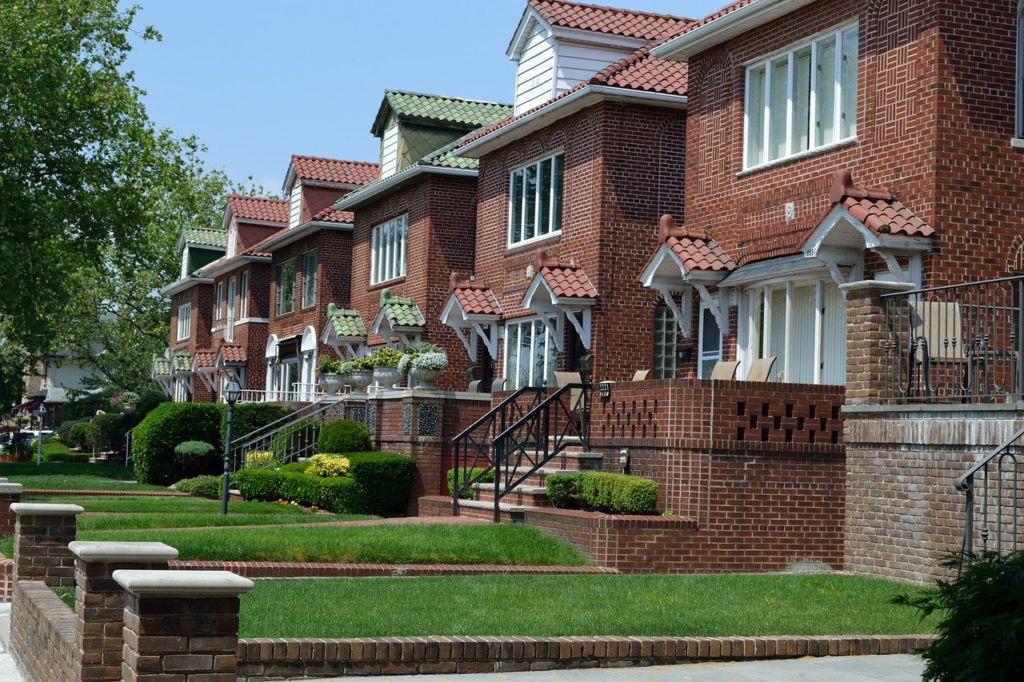
Dementia villages: A new way to approach memory care
The Centers for Disease Control and Prevention estimates by the year 2060, there will be 14 million Americans living with Alzheimer’s disease, more than double the number of those affected today. As this disease grows in proportion, family members often find themselves taking on the weight of care as informal caregivers for their relative living with dementia. In some cases, families are tasked with the decision of moving their loved one into a memory care unit. In this blog, we will discuss traditional memory care units and the development of a new model for long-term care: dementia villages.
Traditional memory care
As we discuss the topic of memory care units, a first thing to recognize is that units often lack a feeling of hominess. Traditionally, outside their front door is a hallway, care providers wear scrubs, and outside areas are restrictive. Some memory care units have dining rooms without a visible kitchen. The residents rarely see someone cook the meal they are going to eat. For a person living with a memory disorder, nearly everything in a memory care unit feels unfamiliar, often causing stress and anxiety, and when a resident becomes overwhelmed, they are often treated with different medications to limit negative emotions and maintain cooperativity with other residents and staff. Lately, there has been growing interest in non-pharmacological interventions to help support the health of people living with dementia.
Dementia villages
For instance, countries such as the Netherlands and Canada have adopted a novel approach to memory care through the concept of dementia villages. The purpose of a dementia village is to provide a safe space that accommodates the perspectives of individuals living with dementia. Unlike traditional memory care units that are confined to a single building, dementia villages utilize a secluded neighborhood with multiple housing establishments, parks, hair salons, movie theaters, restaurants, and more. Each building is staffed by dementia-trained care providers. And instead of conventional scrubs, the care provider will wear an apron if they work in a restaurant or gardening overalls if they are monitoring the park to foster a more relaxed atmosphere. Furthermore, these neighborhoods prioritize walkability; there are no cars inside the neighborhood.
Another goal of dementia villages is to support a seamless transition between private and public spaces. In memory care units, the moment a resident leaves their room, they have immediately entered a shared public space. In contrast, housing in a dementia village is designed to mimic roommates who share a single house. Upon leaving the house, they will enter their front yard where they can see residents walking around. When they leave their front yard, they have entered a public space where they can interact with others.
When researchers at the University College Lillebaelt interviewed relatives of the residents living in a dementia village, they found a common theme: that the village’s setup “[enables] a familiar and meaningful everyday life.” One family member said:
“I think the development is fantastic. My mother enjoys to shop in the small store and the possibility to try on clothes and to be able to buy some chocolate or a piece of soap, is very important to her, because this is something she misses a lot, since she no longer can go out (of the dementia village) on her own.”
Barriers
Although dementia villages provide an enriching environment for older adults living with dementia, there are a few barriers from more being built. First, building a new neighborhood to meet the specific needs of dementia care can be expensive. Second, due to population aging, there is a concern that there may not be enough care providers to sustain traditional memory care facilities, let alone dementia villages. Another concern for dementia villages is that health insurance may not cover the costs. Currently, Medicare does not fully cover the expense to live in an assisted-living facility. It is likely the cost to live in a dementia village may be more expensive that living in a traditional memory care unit. Despite these barriers, research on dementia villages lends support to the notion that alternative methods to long-term care can improve the quality of life for older adults living with dementia.
tl; dr
- By 2060, 14 million people in the US will be living with Alzheimer’s disease.
- Traditional memory care units are often unrecognizable to residents living with dementia, often causing stress.
- Dementia villages utilize secluded neighborhoods to reinstate a familiar and meaningful life to those living with dementia.
- Dementia villages allow residents to freely engage in daily activities, such as going to the grocery store, walking to the park, and eating at a restaurant.
- Currently, there are few dementia villages in the world due to construction costs and staffing issues.
ABOUT THE AUTHOR
Rachel Washburn is a senior majoring in health and exercise science with a minor in gerontology at CSU. She is currently working as a student ambassador at CSU’s Center for Healthy Aging.





